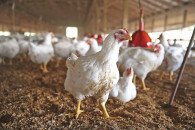Managing Pakistan's financial, production areas at the same time
It will lead to increase in economic growth, expansion of industrial base

Representational image. PHOTO: REUTERS
Both sides justify their claims by coming up with examples and quoting facts and figures. However, the debate does not cover the real questions, which can give a clear picture or are essential to give a fresh impetus to the economy. The debate contributes less to positivity and more to wastage of time.
Let’s try to understand the economy by dividing it into two broad categories – financial management and production management.
Financial management presses the government to create a better credit system, control expenses, rationalise investments, maintain the health of accounts, control current account and fiscal deficits, etc. Government performance in some of these areas seems to be satisfactory. Trade deficit has come down by around 35% in first quarter of the current fiscal year (FY20). The government has tightened the screws on runaway imports and desired results are emerging.
The current account deficit has also dropped $1.58 billion or 55% in the first two months of FY20. The government has also been able to increase tax revenues by 30%.
Although it is trying to widen the tax base, it has so far not succeeded in bringing many major players of the economy in the tax net. National accounts show the distribution of tax collection is highly skewed towards the industry. Although its contribution to the national gross domestic product (GDP) is 20.19%, its share in the national tax revenue is 70%.
The services sector, which is the biggest contributor to GDP with 60.23% share, contributes only 29.4% to the national tax revenue. The agriculture sector’s contribution is almost negligible at 0.60%.
Services and agriculture are the areas that can be targeted for enhancing the tax net. However, the performance of the government in this connection is unsatisfactory.
Many in the services sector are not willing to come under the tax net and even highly qualified professionals refuse to be part of the tax net, leave aside the traders.Protests and strikes have been staged and more have been planned to resist any move to tax them properly. The agriculture sector is avoiding tax payment by using the small farmers as a smokescreen.
Exports
On the production side, exports have increased only in rupee terms and have dropped in terms of dollars. According to the Pakistan Bureau of Statistics (PBS), total export earnings stood at Rs293,933 million in August 2019 as compared to Rs249,240 million in August 2018, a growth of 17.93%.
However, in terms of dollars, total exports amounted to $1,859 million in August 2019 as opposed to $2,013 million in August 2018, with a negative growth of 7.65%.
In case of textile, exports exhibited a positive trend in quantity but fell in terms of earnings in US dollars. There were two major factors for the low earnings – depreciation of the rupee and lower product prices in the global market.
A major success on the export front is a boost to mango and some other commodities’ shipments.
The government needs to understand that financial management alone is not the answer to the economic crisis as it can provide breathing space only for a short period. It is reflected in the latest report on competitiveness unveiled by the World Economic Forum.
A major finding of the report is that the low growth in productivity is a leading factor for the slow economic growth. The tightening of the financial sector causes some serious challenges for the production sector. For example, it has brought down consumption and ultimately the production levels in the large-scale manufacturing (LSM) sector. Support for the production sector is critical for boosting the economy and achieving sustainable growth and development.
According to a report of the State Bank of Pakistan (SBP), LSM has exhibited a negative growth of 2.9% in July-March FY19.
Tax relief, neglected sectors
The most urgent and relevant step the government may take is to reduce the tax burden on the industrial sector. Industries should be given some relief to pave the way for the expansion of the industrial base.
However, it does not mean the industries should have a free hand or their tax liabilities should be drastically slashed. Rather, the government should work on enhancing competitiveness of the industrial sector.
It should also pay attention to the hitherto neglected sectors, especially small and medium enterprises (SMEs) and agriculture. SMEs can be the key to ramping up production, exports and curtailing imports. Agriculture will be helpful in better income distribution and poverty reduction. Both agriculture and services sectors are heavily under-taxed. The government should take some legislative measures to avoid court cases and expand the tax net.
Another area where the government can work is the flow of non-tax revenue. In this regard, state-owned enterprises should be overhauled and modernised. The government should not go for the privatisation of state units, rather it should work on enhancing their efficiency by adopting better governance standards. Pakistan can learn from the Malaysian example of the 1980s. It can hire private-sector CEOs and give them the task of reviving state-owned units and ensuring their sustainable growth. The government needs to strike a balance between the flow of tax and non-tax revenues.
The writer is the executive director of Zalmi Foundation
Published in The Express Tribune, October 14th, 2019.
Like Business on Facebook, follow @TribuneBiz on Twitter to stay informed and join in the conversation.



















COMMENTS
Comments are moderated and generally will be posted if they are on-topic and not abusive.
For more information, please see our Comments FAQ